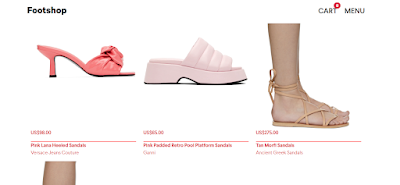Vercel Deployment
11:07
Revolutionizing Real Estate: Building a Next.js 13-Powered Website
In the fast-paced world of real estate, staying ahead of the curve is paramount. With the advent of cutting-edge technologies and innovative frameworks, developers are continuously striving to enhance user experiences and streamline processes. Enter Next.js 13 – the latest iteration of the popular React framework that promises a seamless development experience coupled with enhanced performance and scalability.
Building the Foundation
To harness the power of Next.js 13, we embarked on a journey to create a dynamic and feature-rich real estate website. Leveraging the robust capabilities of Next.js, we initiated our project with a single command:
npx create-next-app@latest ./
Powering UI with Chakra UI
Frontend design and speed are integral to delivering an exceptional user experience. To achieve this, we turned to Chakra UI – a versatile UI library known for its elegant components and lightning-fast performance. By integrating Chakra UI into our project, we laid the groundwork for a visually stunning and highly responsive interface.
Fetching Data from RapidAPI
In the realm of real estate, access to up-to-date property listings is indispensable. Leveraging the vast database provided by RapidAPI, specifically the Bayut API, we seamlessly integrated property data into our application. With Bayut's comprehensive dataset at our disposal, users can effortlessly explore a myriad of rent and sale properties tailored to their preferences.
Optimizing Image Loading
Efficiently handling image loading is crucial for enhancing website performance. With Next.js, configuring image domains in the `next.config.js` file ensures seamless rendering of images from external sources. By specifying image domains, we optimized image loading and ensured a smooth browsing experience for our users.
javascript
module.exports = {
reactStrictMode: true,
images: {
domains: ['www.image.com']
}
}
Enhancing User Experience
Central to our real estate website is the seamless navigation and intuitive search functionality. Implementing search filters allows users to effortlessly discover properties that meet their criteria, be it for rent or sale. With a user-friendly interface and smooth animations powered by Framer Motion, navigating through listings is a breeze.
Streamlining Performance with NProgress
In today's digital landscape, user expectations for speed and responsiveness are higher than ever. To provide users with visual feedback during page transitions and data fetching, we integrated NProgress – a lightweight progress bar library. With NProgress, loading indicators accompany seamless transitions, ensuring a polished and professional browsing experience.
Deployment and Beyond
With our project complete, we embraced the collaborative nature of development by sharing our codebase on GitHub. By leveraging the power of version control and community contributions, our project continues to evolve and improve. Furthermore, deploying our application on Vercel – a platform tailored for Next.js applications – ensures optimal performance and scalability.
GitHub Repository: https://github.com/qubesmagazine/real-estate2024
Live Demo: https://real-estate2024.vercel.app/
Conclusion
In conclusion, our journey with Next.js 13 has been nothing short of transformative. By harnessing the capabilities of cutting-edge technologies and best practices, we've built a real estate website that not only meets but exceeds user expectations. With its unparalleled performance, scalability, and flexibility, Next.js continues to redefine the future of web development, one project at a time.


.jpeg)
.jpeg)




















